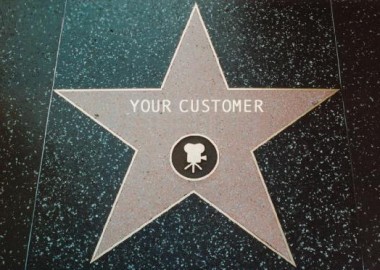
You know what it’s like to listen to a great story.
You zero in on the teller’s facial expressions. Other sounds fade. You start to feel the sensory details being described. You begin to really feel what the characters are feeling. You’re there. You’re actually, actively listening.
Children understand this intuitively. In thrall to a movie or book, their attention is undivided. Their mouths are agape, their eyes wide. They’re in the story. Right there.
As a leader, you’re already telling stories to colleagues, boards, superiors, and employees, all with the goal of encouraging your audience to take action. Learn to tell those stories well. Your leadership story can offer a ready-made journey that your audiences want, and a vision of a transformation they are persuaded they can help you achieve.
Your leadership story can offer a ready-made journey that your audiences want, and a vision of a transformation they are persuaded they can help you achieve.
Here’s how to begin.
1. Tell Leadership Stories
Leadership stories are a little different than regular stories, in that the ending hasn’t happened yet. The vision is a work in progress. Your job as a leader is to make people want to come along.
It’s a pitch, of sorts: you’re laying out your vision with as much specificity and clarity as you can manage, so that your audience feels the happy ending, and wants it. Badly.
2. Get Specific
As you craft your vision of the future, start by asking yourself a few questions. Take a few minutes every day or week to do this, and pay special attention to new details. Details are where your story comes to life. Keep a notebook, and don’t hesitate to jot down details as they occur to you.
- What does your vision of the future look like? Describe it, in all of its richness. What does it feel like to be in the future you envision? Close your eyes, and imagine the sensory details. Take a moment to imagine a day in your future, complete with what you see, hear, feel, smell, and taste.
- Where does your audience fit in? Become a novelist here: imagine the other characters in your future vision. What are they doing in a typical day? What does the world feel like — really feel like — to them? How can their motives, goals, fears, and uncertainties be brought into alignment with your planned trajectory?
- What challenges exist along the way? Your vision is still not real. And you understand that it’s not going to be easy to get there. So get real about what you’re up against and make it clear to your audience that you’re not just a dreamer. You know the risks, and you’re ready to face them. And, together, overcome them.
- Why you? In terms of being able to powerfully tell your leadership story, you’ll need to get real about yourself — and know yourself better than your challengers or detractors do. Consider, carefully, what kind of evidence you can offer to support your claim that this vision can be achieved by only person. You.
3. Get Real
People are only going to buy into your leadership story if they trust you. If they believe you.
Consider why you love or hate the characters in your favourite movies. Tony Soprano is a mob boss. And yet we care about him. Why? Because he suffers from anxiety. Because we know that in spite of his misbehaviour, he loves and takes care of his family. Because he has to go up against thugs even worse than him. Because, in short, we get a window into his world, stains and all, and see him as a person who does what he says he’s going to do.
So don’t hesitate to share your real struggles with your audience. (It’s better if you’re not a mob boss.)
4. Get Ready
Already sweating, just imagining what it will take to make your story unforgettable and compelling? And you haven’t actually even had to stand up and test it on your first audience yet! Why are you doing any of this, again?
In the words of businessman and leader Bill Gurley of Silicon Valley v.c. firm Benchmark:
The great storytellers have an unfair competitive advantage. They are going to recruit better, they will be darlings in the press, they are going to raise money more easily and at higher prices, they are going to close amazing business developer partnerships, and they are going to have a strong and cohesive corporate culture. Perhaps more to the point, they are more likely to deliver a positive investment return.





